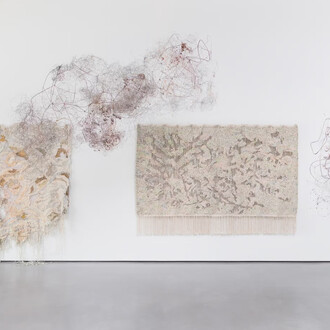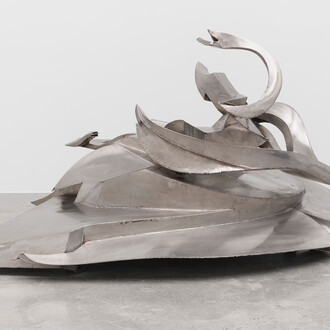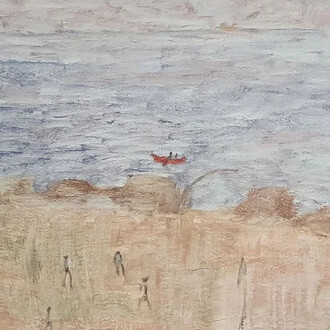The work of José Toirac is defined by its ability to observe and dismantle historical and political processes. His references, therefore, are always essential characters of politics and history, through which he relates the universal, to the reality that surrounds him. His intention is to show the zones of silence of the official history, the truth that always hides behind the power. His work is strongly censured by the authorities in Cuba. Part of his creative process is to use images from the public domain (magazines and official newspapers), because once they are published, supposedly they passed the censorship of the State. His work travels along the line that separates politics from reality, exposing that intermediate zone where manipulation mechanisms are visible. This series is entitled "Waiting for the Right Time", and represents a summary of years of work, of trial and error, negotiation and censorship. For years, for all his censored projects, he always heard a government official say, as an excuse for the censorship, “I'm sorry, the project has nothing wrong, but it is not the right time for it to be shown”. Toirac still lives in Cuba, a political artist needs to live in front of the powers that be, otherwise it would be easy to create political art. Finally, it is worth saying that this series has been censored in Cuba, and has been waiting for its right time.
In this exhibition , among the series to be shown will be works from “Waiting for the Right Time”, which consists of combining the image of Fidel Castro with classic advertisements of consumer products. We will also exhibit works from three other censored series: “Vanitas” (a compilation of portraits of the first ladies of Cuba, a position not recognized by the revolution); “Alma Pater” (a series of portraits of ‘good’ and ‘bad’ historical male figures caught in moments of tender embrace with their children or grandchildren; and “Crisis of the 50’s” (a series of pornographic selfies taken by university students with government issued cell phones, hidden behind delicate watercolors of the typical Cuban products displayed in the photographs). Finally, in our Video Room we will present the new edition of the artist’s iconic piece – “Opus” showing on the screen a series of numbers pronounced in a single speech given by Fidel Castro at a school opening.
Jose Angel Toirac (b. Guantánamo, 1966) graduated from the Instituto Superior de Arte (ISA) in 1990 and currently lives and works in Havana. Toirac’s work has been included in many landmark exhibitions and has exhibited extensively in several countries, both individually and as part of collective exhibitions. His pieces can be found in collections such as the National Museum of Fine Arts, Havana, Cuba; the Museum of Modern Art (MoMA), New York City; the Centro Atlántico de Arte Moderno (CAAM), Las Palmas de Gran Canaria, Spain; the Arizona State University Art Museum (ASU) , Tempe, Arizona; the Ludwig Forum, Aachen, Germany; the Rubell Family Collection, Miami, Florida; The Rhode Island School of Design Museum, Providence, Rhode Island; the Orange County Museum of Art, Newport Beach, California; the Jack S. Blanton Museum of Art, Austin, Texas; and the Museé des Beux-Arts de Montréal, Québec, Canada, and the Centre Pompidou, Paris among others.
















